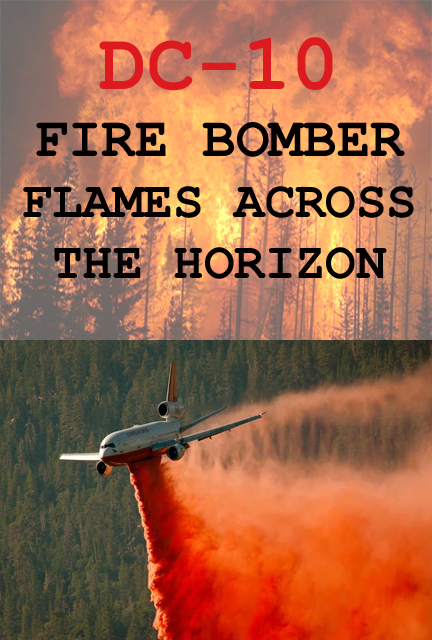

PLEASE CRITIQUE THIS PROLOG AT:
solartoys@yahoo.com
IF YOU WANT TO READ THE NEXT
CHAPTER EMAIL ME:
solartoys@yahoo.com
|
FLAMES ACROSS THE HORIZON by Robert Nerbovig
| |||||||
|
The summer of 2024 had been a crucible that forged legends from ordinary pilots and reshaped the very nature of aerial firefighting across the American West. As autumn's first cool winds swept across California's Central Valley, the men and women of DC-10 Aerial Firefighting Systems LLC could look back on a season that had tested every limit of their courage, skill, and equipment. From the towering infernos that had threatened to consume entire communities in Oregon to the wind-driven monsters that had raced across Southern California's urban interface, their fleet of converted jumbo jets had stood as the final line of defense when all else failed. Thirty DC-10s now bore the scars and honor marks of battles fought in skies choked with smoke and heat, their bellies having delivered millions of gallons of life-saving retardant to fires that had seemed unstoppable. The company had evolved far beyond its humble beginnings. What started as a desperate experiment with surplus airliners had become the backbone of the West's firefighting capability. Their pilots—call signs like "Thunder," "Desert Rose," and "Eagle Eye", had become household names in communities from San Diego to Seattle, their aircraft's distinctive roar overhead a sound of salvation rather than alarm. But success had bred new challenges. The scale of wildfire threat continued to escalate with each passing season, driven by climate patterns that seemed to mock traditional firefighting strategies. Single fires now routinely exceeded 100,000 acres. Megafires spawning their own weather systems had become the new normal. The old methods of attack, even with their proven DC-10 fleet, were being stretched to their absolute limits. Innovation had become survival. The integration of KC-46 Pegasus tankers into their operations represented more than just new equipment; it was a fundamental reimagining of how aerial firefighting could be conducted. With four strategic bases now operational across California, they possessed the capability to maintain continuous air coverage over multiple major incidents simultaneously, something that had been impossible just two years earlier. Colonel George "Thunder" Loya stood in the operations center at Beale Air Force Base, watching his team prepare for what weather forecasters were predicting could be the most challenging fire season in California's recorded history. The wall displays showed not just their current resources, but the intricate web of coordination between federal agencies, state resources, and local fire departments that had made their expanded operations possible. The phone on his desk held direct lines to every major incident commander in the western United States. The tactical displays could track every aircraft in their fleet in real-time, showing fuel status, retardant loads, and crew fatigue levels. Most importantly, the computer models now predicted fire behavior with unprecedented accuracy, allowing them to position resources before disasters struck rather than simply reacting to them. Yet for all the technology and expanded capability, Thunder knew that when the alarm sounded and his pilots strapped into their cockpits, it still came down to the same fundamental equation it always had: skilled aviators willing to fly into conditions that would ground every other aircraft, carrying the hopes of entire communities in their cargo holds. The radio crackled with the morning's first transmission from Fire Dispatch. Somewhere in the mountains east of Los Angeles, another fire was beginning to write its story across the landscape. Within minutes, the distinctive whine of DC-10 engines would fill the air as another crew launched into harm's way, carrying ninety-four thousand gallons of hope and the accumulated experience of hundreds of successful firefighting missions. This fire season was about to begin, and the horizon was already turning red with the promise of flames. "In wildfire suppression, there are no small victories, only communities saved, lives protected, and forests that will grow again. This is the story of those who fly toward the fire when everyone else runs away." |

